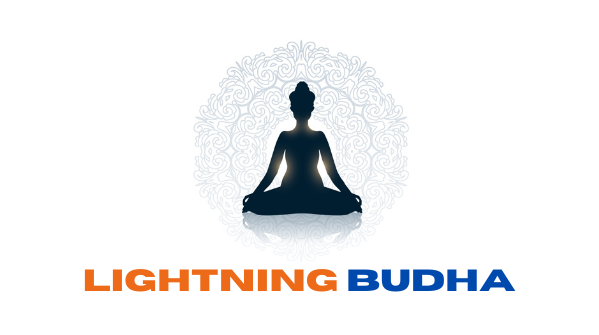How to Practice Mindfulness Like Kenshin Himura: Discover powerful lessons in mindfulness, peace, and self-awareness inspired by Kenshin’s journey in Rurouni Kenshin. Learn how to apply his Zen-like habits to your daily life.
In the hustle and bustle of modern life, many people search for peace, clarity, and inner strength. Who better to draw inspiration from than Kenshin Himura, the beloved protagonist of the classic anime “Rurouni Kenshin”?

Once a feared assassin known as Battousai, Kenshin transforms his life by embracing mindfulness, compassion, and a vow never to kill again. But what is mindfulness in the real world, and how can you cultivate it like Kenshin to lead a more balanced, purposeful life?
Mindfulness is more than just a modern self-help trend—it’s a way of life, a practice of being fully present in each moment.
And who better to learn this from than Kenshin Himura, the legendary Rurouni Kenshin (Samurai X), whose calm demeanor, razor-sharp focus, and deep sense of peace make him the perfect model for mindful living?
Kenshin’s journey from a deadly assassin (Battousai the Manslayer) to a wandering swordsman who vows never to kill again is a masterclass in mindfulness, discipline, and emotional control.
By adopting his principles, we can cultivate a peaceful, focused, and balanced life—without even needing a sword.

“The true strength of a swordsman isn’t in his blade, but in his mind and heart.” – Kenshin Himura
What is Mindfulness?
At its core, mindfulness is the practice of living fully in the present moment, with awareness and acceptance of your thoughts, feelings, and surroundings.
Instead of being lost in worries about the past or future, mindfulness helps you cultivate clarity, calm, and kindness toward yourself and others.

Mindfulness has deep roots in Buddhist traditions, but today, it’s widely recognized by psychologists and doctors for its ability to reduce stress, improve mental health, and enhance emotional well-being.
Techniques range from meditation and breathing exercises to simply noticing the sensations in your body or the beauty of a quiet morning.
Most importantly, mindfulness is about living intentionally, choosing your words and actions with care—just like Kenshin Himura.
Who is Kenshin Himura? Why He Inspires Mindfulness
Kenshin Himura is the enigmatic hero of “Rurouni Kenshin,” set in Japan’s Meiji Era. After leaving his life as Hitokiri Battousai, a legendary assassin, he wanders the countryside with a reverse-blade sword (sakabatou).

His mission? To protect the innocent without resorting to killing, making amends for his past through compassion, humility, and forgiveness.
Why Kenshin Exemplifies Mindfulness:
- Living with Purpose: Every step Kenshin takes is guided by his vow not to kill, reminding us to align our actions with our values.
- Responding, Not Reacting: He faces insults or attacks with measured calm, showing mastery over his emotions.
- Gentleness and Strength: Kenshin balances his immense power with an unwavering sense of gentleness—a true blueprint for mindful living.
- Acceptance & Self-Compassion: He acknowledges his painful past but chooses to forgive himself, focusing on what he can do now.
“The scar on my face is a reminder. A lesson that my soul must not return to the path of murder.”
— Kenshin Himura
Kenshin’s Philosophy: The Way of the Peaceful Mind
Kenshin’s life embodies three core mindfulness principles:
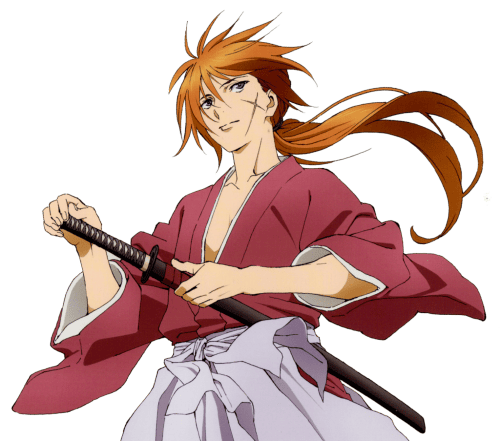
1. “Sugu ni Okoru na” – Do Not Be Quick to Anger
One of Kenshin’s most famous lines is “Sugu ni okoru na” (“Do not be quick to anger”). His ability to remain calm in battle—even when provoked—comes from deep self-awareness.
How to apply this:
- Pause before reacting. When emotions flare, take a breath (like Kenshin’s signature “Oro?” moment).
- Observe your thoughts without judgment. Anger is natural, but acting on it impulsively isn’t.
2. “Ikken Hissatsu” – One Strike, Certain Kill (But Applied to Focus)
In swordsmanship, Ikken Hissatsu means ending a fight in a single decisive blow. For mindfulness, it translates to being fully present in every action.
How to apply this:
- Single-tasking over multitasking. Whether eating, working, or talking, give it your full attention.
- Eliminate distractions. Like a swordsman in battle, be where you are—completely.
3. “Bushido no Kokoro” – The Heart of a Warrior
Kenshin follows Bushido (the way of the warrior), which values honor, compassion, and discipline. Mindfulness isn’t passive—it’s an active practice of self-mastery.
How to apply this:
- Live with intention. Every action should align with your values.
- Practice daily reflection (like Kenshin’s quiet moments under the sakura trees).
Kenshin’s Core Principles of Mindful Living
Kenshin’s philosophy is surprisingly modern, echoing many teachings you’ll find in today’s mindfulness and self-development books. Here’s how you can adopt his principles:
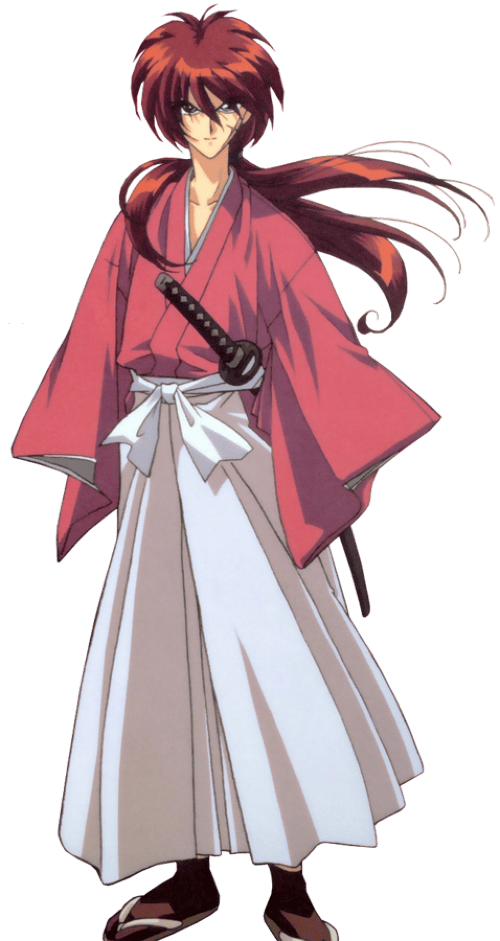
3.1. Ahimsa (Non-Violence & Compassion)
Kenshin’s vow never to kill is a radical act of non-violence. In real life, this could mean being gentle with your words, cultivating compassion even during disagreements, and offering help to those in need.
Practice:
Next time you’re angry, pause. Inhale deeply, and ask yourself: “What would Kenshin do?” Respond with kindness instead of aggression.
“Whatever you lose, you’ll find it again. But what you throw away you’ll never get back.”
— Kenshin Himura
3.2. Presence and Non-Attachment
Kenshin doesn’t dwell on the glory or pain of his past, nor does he overly worry about the future. He treasures each moment—the laughter at Kaoru’s dojo, the cherry blossoms, the warmth of friendship.
Practice:
Sit quietly for five minutes. Focus on the sensation of your breath, the sounds around you. If your mind wanders, gently bring it back—just as Kenshin centers himself before a duel.
3.3. Humility and Open-mindedness
Despite his skill, Kenshin never acts superior. He’s open to learning, whether from children, friends, or even those who challenge him.
Practice:
When receiving criticism, pause and ask: “Is there truth in this? Can I learn?” Approach life with curiosity, not ego.
3.4. Forgiveness and Letting Go
Kenshin’s journey is also about forgiveness—of himself, and others, even former enemies. This brings true peace.
Practice:
Reflect on an old grudge or self-blame. Imagine Kenshin setting down his sword—then let go of your anger or guilt.
“If you keep thinking about what you have lost, you might lose what you have left.”
— Kenshin Himura
Practical Steps: Mindfulness Exercises Inspired by Kenshin

4.1. The Reverse-Blade Pause
Whenever you feel reactive—angry, anxious, or overwhelmed—pause like Kenshin. Place your hand over your heart, take three deep breaths, and reverse your mental “blade”—choose not to lash out or judge.
4.2. Sakabatou Walking Meditation
Kenshin spends much of the series walking mindfully. Try this:
- Step outside or pace in your house.
- With each step, notice the sensation of your feet touching the ground.
- Take in the sights and sounds, appreciating the now.
4.3. The Battousai’s Reflection
Each day, spend a few minutes journaling:
- What am I grateful for?
- What mistakes did I make, and what did I learn?
- How can I do better tomorrow, without harsh self-judgment?
4.4. Swordsman’s Breath
Before facing a big challenge—a meeting, a test, a difficult conversation—stand tall, close your eyes, and take ten slow breaths. Picture Kenshin standing calm before a storm, grounded yet flexible.
“You can die anytime, but living takes true courage.”
— Kenshin Himura
Breathing Like a Swordsman: Kenshin’s Calm Under Pressure
Kenshin’s battles are won not just with his sword but with his breath. Controlled breathing keeps him centered.
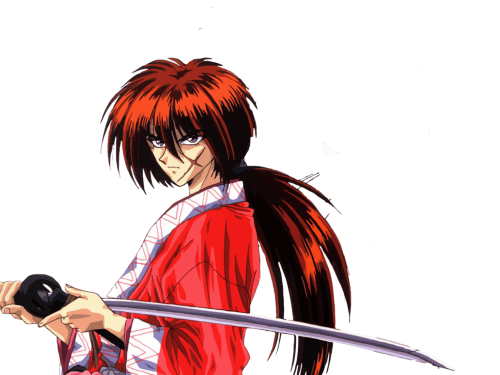
The Hiten Mitsurugi Breathing Technique
While fictional, we can adapt Kenshin’s breathing style for real-life mindfulness:
1. Deep Belly Breathing (Seika Tanden Focus)
- Sit or stand straight (like a samurai in seiza).
- Breathe in deeply through the nose (4 sec), filling the lower abdomen.
- Hold for 2 seconds.
- Exhale slowly (6 sec), releasing tension.
2. Combat Breathing (For Stressful Moments)
- Inhale sharply (like preparing for a strike).
- Exhale with a soft “haa” (like Kenshin’s post-battle relaxation).
Why it works: Deep breathing activates the parasympathetic nervous system, reducing stress and sharpening focus—just like a swordsman’s calm before a duel.
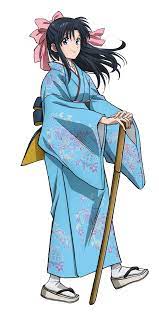
“Even if you’re not able to see the results, you can’t give up hope.”
— Kaoru Kamiya
The Art of Being Present: Kenshin’s “Mushin” (No-Mind State)
“Mushin no Shin” (mind without mind) is a Zen concept Kenshin embodies—a state of pure action without overthinking.
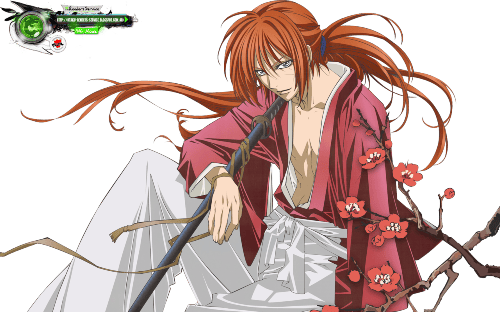
How to Cultivate Mushin in Daily Life
- Meditate daily. Even 5 minutes of focusing on your breath builds mental clarity.
- Engage in flow activities (like martial arts, painting, or even washing dishes mindfully).
- Let go of over-analysis. Trust your instincts (as Kenshin does in battle).
“A sword is a weapon. The art of swordsmanship is learning how to kill. What I’ve learned is not to kill.” – Kenshin
Emotional Balance: Kenshin’s Control Over Rage & Regret
Kenshin’s past haunts him, yet he doesn’t let anger or guilt consume him.
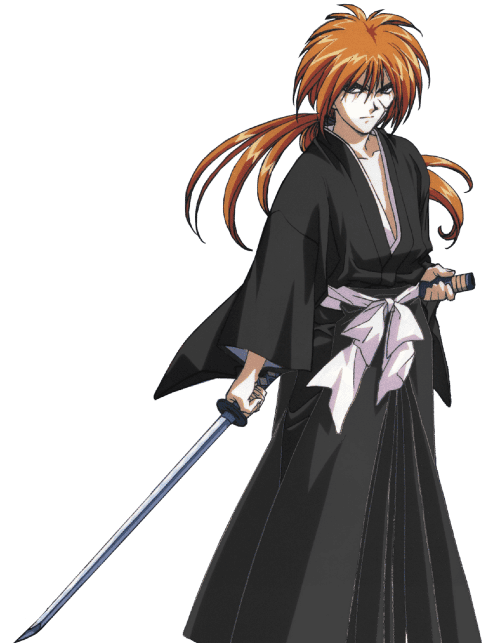
Mindful Ways to Handle Emotions
1. Acknowledge, don’t suppress. Kenshin accepts his past but chooses peace.
2. Channel emotions into positive action (like protecting others).
3. Forgive yourself. Kenshin’s vow to never kill again is his redemption.
Mindful Movement: Iaido & Walking Meditation
Kenshin’s swordsmanship (Iaido) is a moving meditation. You don’t need a katana to practice:
Iaido-Inspired Mindful Movement
- Slow, deliberate motions (even brushing teeth can be a mindfulness exercise).
- Walking meditation (like Kenshin’s wanderings—each step with awareness).
Final Words: Embody the Way of the Peaceful Swordsman
Kenshin Himura’s journey is not just about swords and samurai—it’s an invitation to live your life with awareness, compassion, and purpose.
By practicing mindfulness in your daily routines—even through simple acts like deep breathing, mindful walking, and letting go of grudges—you can cultivate the same quiet strength and gentle wisdom that makes Kenshin so beloved.

Remember: Mindfulness isn’t about escaping reality or never feeling pain. It’s about embracing life, moment by moment, and transforming suffering into understanding—just as Kenshin does, one peaceful step at a time.
“No matter how much you regret or wish, if you can only live in the real world. Whether yesterday was good or bad, it has already passed. You have to live and face tomorrow, not yesterday or today.”
— Kenshin Himura
The Path of the Peaceful Warrior
Kenshin Himura teaches us that true strength lies in mindfulness, compassion, and self-control. By adopting his mindset—breathing deeply, staying present, and mastering emotions—we can navigate life’s battles with grace.
“The world is full of pain and suffering… But it’s also full of overcoming it.” – Kenshin
Your Turn: Take the First Step
- Try 5 minutes of mindful breathing today.
- Reflect: What’s one emotion you can observe without reacting?
Leave a comment below: Which Kenshin quote inspires you the most? Let’s walk the path of mindfulness—together.
Other Interesting Posts To Read:
Top 10 Anime Characters Who Promote Self-Care
5 Anime-Inspired Habits to Improve Your Physical Fitness
What ‘Attack on Titan’ Can Teach You About Stress and Survival Psychology
What Can We Learn About Healthy Eating from Anime Food Culture?
What Demon Slayer Teaches Us About Mental Health and Breathing Techniques
How Goku’s Diet and Workout Routine Can Inspire a Healthy Lifestyle
